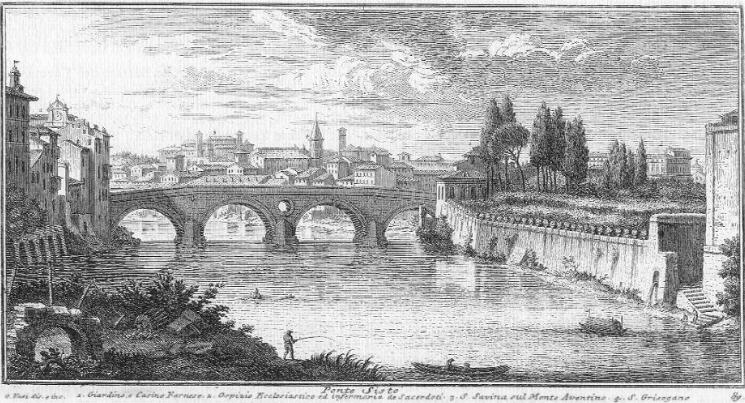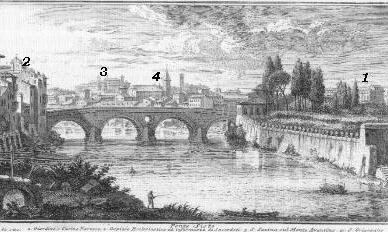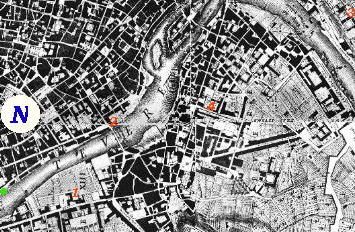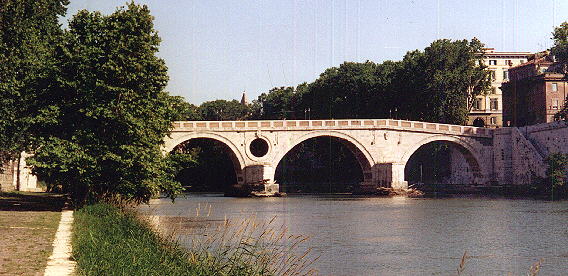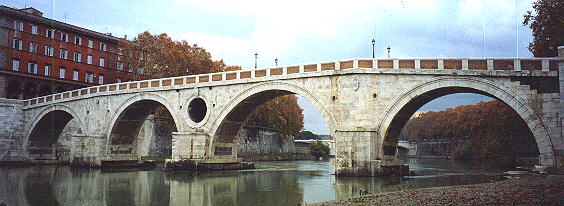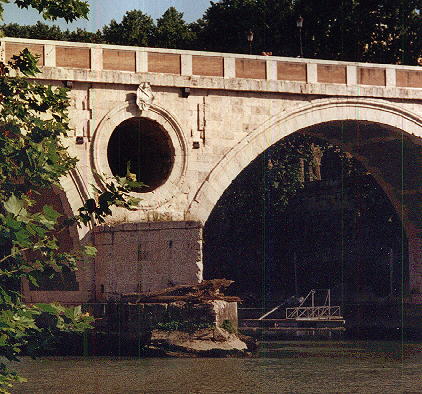  Ponte Sisto (Book 5) (Map C3) (Day 6) (View D8) (Rione Trastevere) In this page:
This second view of Ponte Sisto (to see the first one click here) is taken from
Passo della Barchetta all'Armata the point where boats linked Via Giulia with
Via della Lungara. The steps on the right side of the plate led to Monastero della SS. Croce usually known as Monastero delle Scalette (steps).
The view is taken from the green dot in the small 1748 map here below.
In the description below the plate Vasi made reference to: 1) Giardino Farnese;
2) Collegio
Ecclesiastico; 3) S. Sabina sul Monte Aventino; 4) S. Grisogono.
All are shown in detail in other pages.
The quaying of the river and the trees do not allow any longer the old view. However the tip of S. Grisogono is still visible.
In 1450 a mule got restive on Ponte S. Angelo during a crowded Jubilee procession and many people fell into the river. In view of the forthcoming 1475 Jubilee, Sixtus IV built on the site of Pons Aurelius a new bridge to facilitate the access to the Vatican and avoid a repetition of the 1450 accident. The bridge has been recently restored with a new parapet (similar to that of Ponte Quattro Capi).
Excerpts from Giuseppe Vasi 1761 Itinerary related to this page:
Next plate in Book 5: Spiaggia detta la Regola Next step in Day 6 itinerary: Porta Settimiana
Go
to |
All images © 1999 - 2003 by Roberto Piperno. Write to romapip@quipo.it
